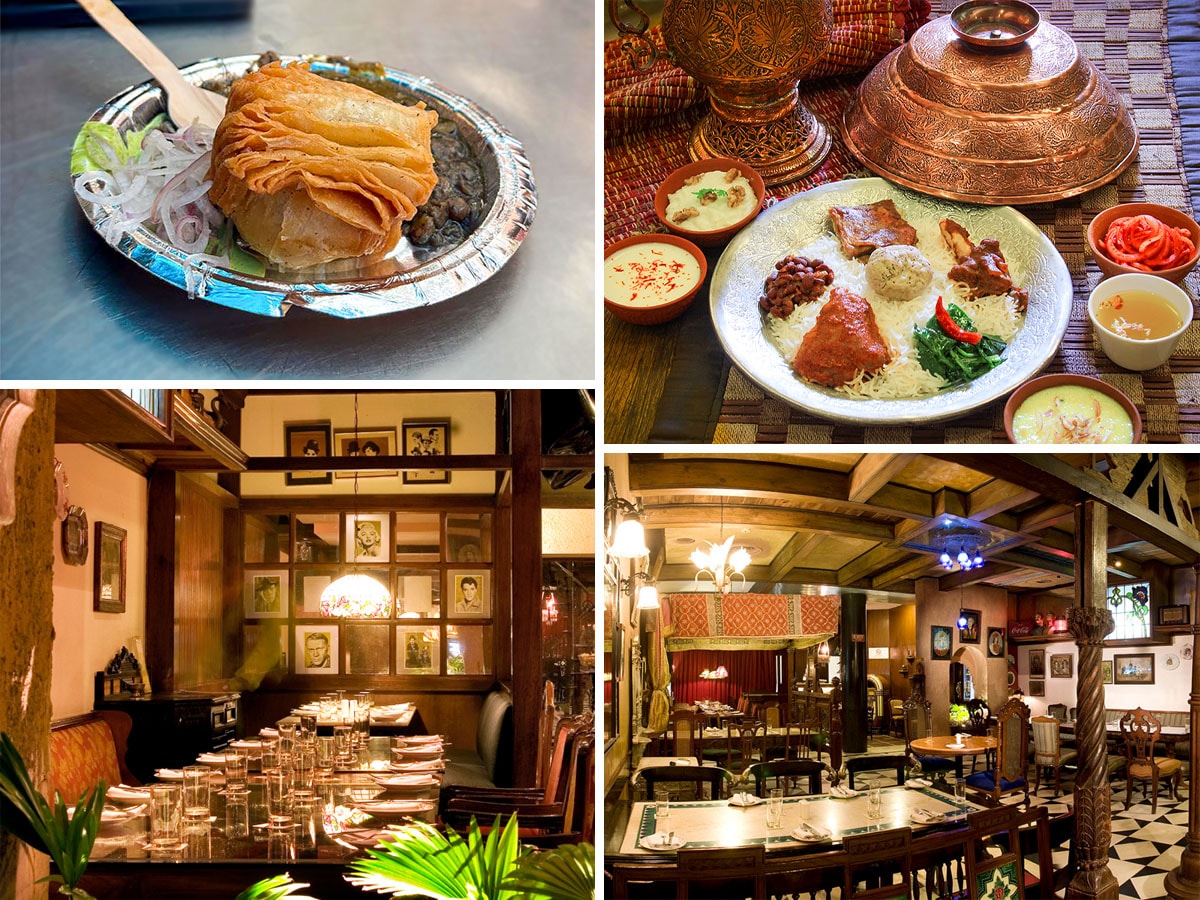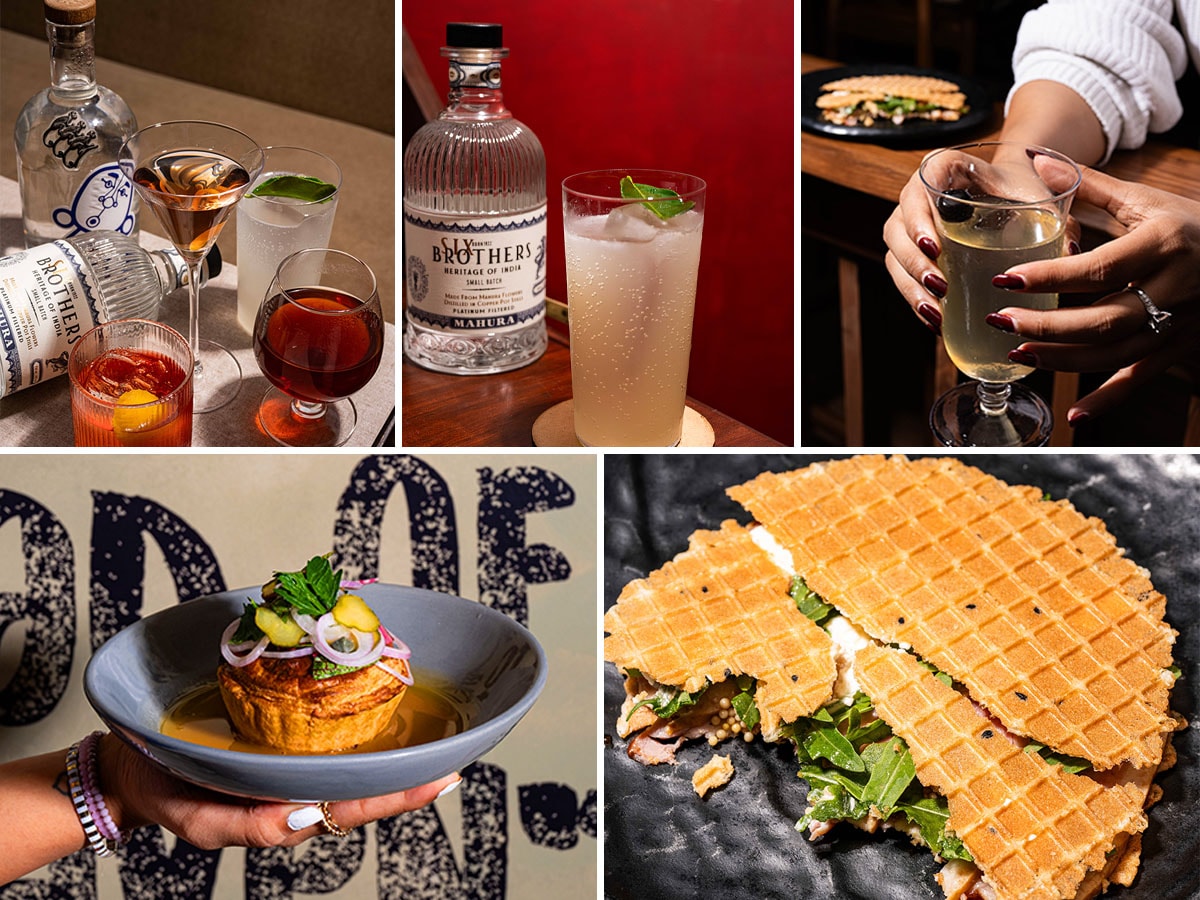Lost recipes are the new luxe
From Japani samosa to taar qaliya, wazwan to raab, India's disappearing heritage dishes make for luxury dining this Diwali
 (Clockwise from above right )Two views of newly renovated Chor Bizarre; Japani Samosa; Kashmiri wazwan
(Clockwise from above right )Two views of newly renovated Chor Bizarre; Japani Samosa; Kashmiri wazwan
Three of the four surviving arched, ruined darwazas (gates) of Mughal Delhi lie along the busy stretch leading up to the historic Broadway Hotel on Asaf Ali Road, where one of Delhi’s most iconic traditional Indian restaurants Chor Bizarre has just reopened, prompting a luxurious reworking of nostalgia.
Asaf Ali Road has been home as much to the erstwhile Delhi Stock Exchange and Delite cinema of early post-Independence years as to the bygone glories of Shahjahanabad. As I drive past Turkman darwaza, named after the tomb of a sufi saint, and step through the portals of time, it is to stand by a “chaat mobile” (a vintage car converted into a chaat dispensing station) from where old Delhi’s elusive Japani samosa is being dispensed in more salubrious (and hygienic) surroundings than it may have ever found since its invention in Lahore in the 1920s.
The Japani samosa made an appearance in Delhi’s Manohar Samosewalle in 1949, a stall at Chandni Chowk. The dish had migrated post-Partition from Lahore, where the name “Japani” likely connoted “novelty”, in a nod to trade and travel between the undivided Punjab and Japan at the time. Japani cloth, for instance, referred to machine-made cloth in the early 20th century, recall some old-timers. Post World War 1, Indian traders had started becoming the middlemen for Japanese exports to Europe. Punjab’s rich young men also travelled to Japan to broaden their education, as the fascinating Maharaja Jagjit Singh of Patiala’s travelogue in 1902 suggests.
For close to 75 years, the Japani samosa—it is said to have 60 layers of flaky phyllo pastry and has nothing Japanese about it—has been one of old Delhi’s fabled street-eats. However, few even in the city have ever eaten it, with just Manohar Samosewalle selling it.
At Chor Bizarre Delhi—it houses art deco antiques including a sword stand from Churu, early 20th century floor tiles, and a clipping of The Times of India from August 16 1947—the Japani samosa is trending as a heritage curiosity, along with other chaats and kachoris of the old city. These dishes are now accessible in an upscale restaurant environment to foodies looking for the unique, exclusive and historic. A food festival at the restaurant featured the dishes, such as the Japani samosa from Manohar Samosewalla—bought from their original vendors in the walled city who were duly credited on the festival menu in a bid to promote old Delhi’s food culture. Given the response from customers, the restaurant may continue serving these up on a more regular basis.



















